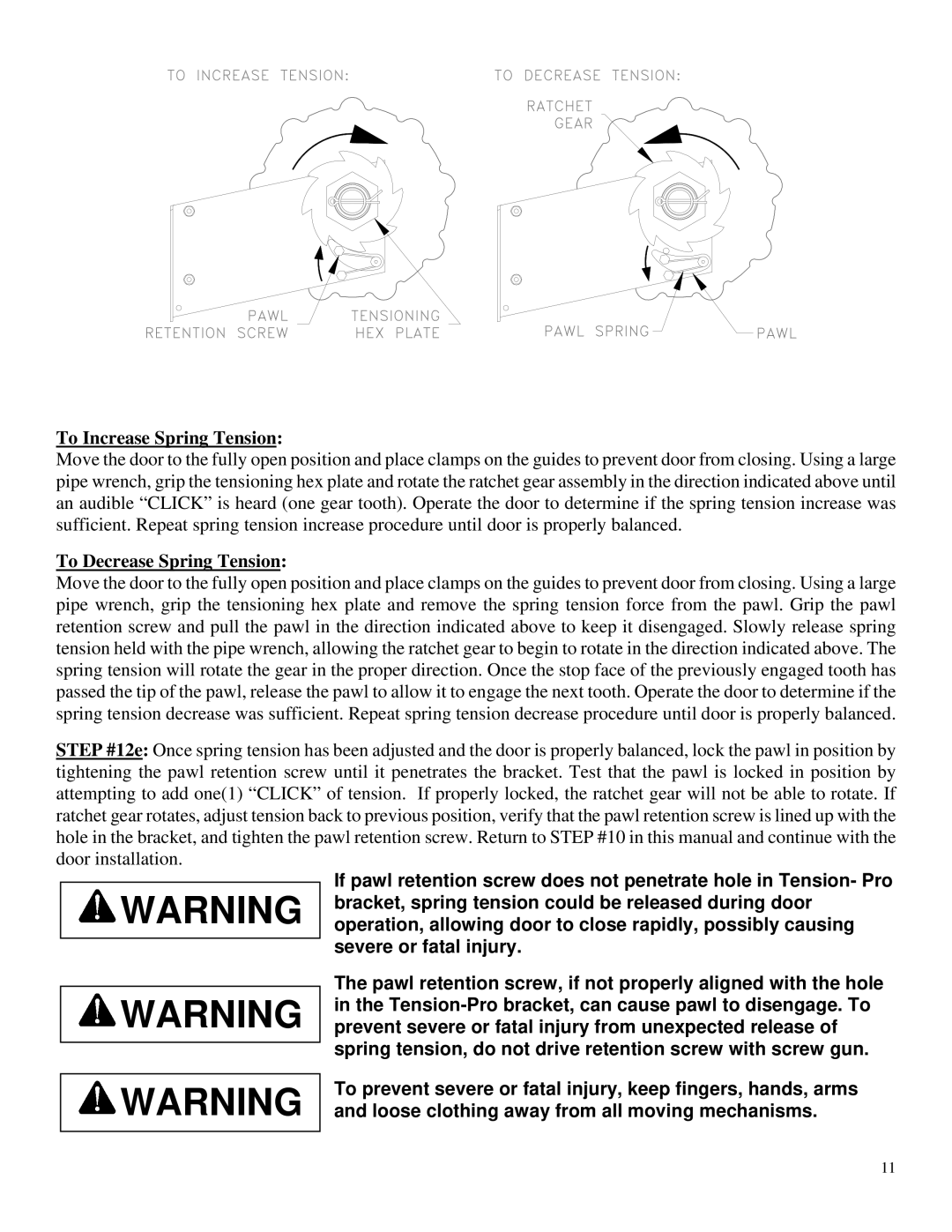
To Increase Spring Tension:
Move the door to the fully open position and place clamps on the guides to prevent door from closing. Using a large pipe wrench, grip the tensioning hex plate and rotate the ratchet gear assembly in the direction indicated above until an audible “CLICK” is heard (one gear tooth). Operate the door to determine if the spring tension increase was sufficient. Repeat spring tension increase procedure until door is properly balanced.
To Decrease Spring Tension:
Move the door to the fully open position and place clamps on the guides to prevent door from closing. Using a large pipe wrench, grip the tensioning hex plate and remove the spring tension force from the pawl. Grip the pawl retention screw and pull the pawl in the direction indicated above to keep it disengaged. Slowly release spring tension held with the pipe wrench, allowing the ratchet gear to begin to rotate in the direction indicated above. The spring tension will rotate the gear in the proper direction. Once the stop face of the previously engaged tooth has passed the tip of the pawl, release the pawl to allow it to engage the next tooth. Operate the door to determine if the spring tension decrease was sufficient. Repeat spring tension decrease procedure until door is properly balanced.
STEP #12e: Once spring tension has been adjusted and the door is properly balanced, lock the pawl in position by tightening the pawl retention screw until it penetrates the bracket. Test that the pawl is locked in position by attempting to add one(1) “CLICK” of tension. If properly locked, the ratchet gear will not be able to rotate. If ratchet gear rotates, adjust tension back to previous position, verify that the pawl retention screw is lined up with the hole in the bracket, and tighten the pawl retention screw. Return to STEP #10 in this manual and continue with the door installation.
![]()
![]() WARNING
WARNING
![]()
![]() WARNING
WARNING
![]()
![]() WARNING
WARNING
If pawl retention screw does not penetrate hole in Tension- Pro bracket, spring tension could be released during door operation, allowing door to close rapidly, possibly causing severe or fatal injury.
The pawl retention screw, if not properly aligned with the hole in the
To prevent severe or fatal injury, keep fingers, hands, arms and loose clothing away from all moving mechanisms.
11
